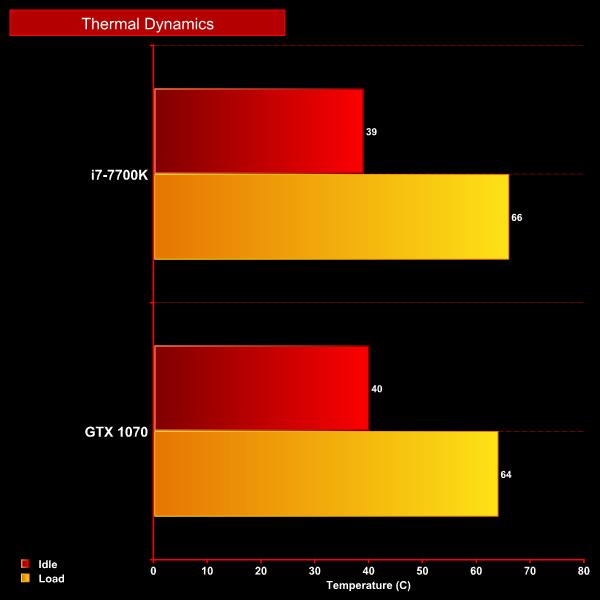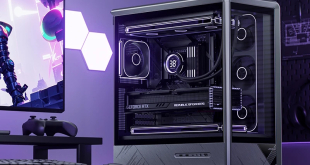Testing this case involved spending a good amount of time using it after the build for gaming and day-to-day tasks. Of course, stressing the GPU and CPU meant seeing what a chassis with a single fan could do.
Having checked CPU and GPU temps at idle, I stressed the system by using AIDA 64 Extreme. Leaving the program running for 15 minutes, I noted the temperatures at regular intervals and recorded the maximum values.
To testing the Corsair Carbide Spec-04 Tempered Glass, I installed the following components:
- Intel Core i7-7700K
- Supermicro C7Z270-CG Motherboard
- 2x 8GB Crucial Ballistix Tactical DDR4-3000
- ASUS ROG Strix GTX 1070
- Noctua NH-U12S CPU cooler
- EVGA 600 BQ Power Supply
- Samsung 850 Pro 256GB SSD
Thermal Dynamics

Just like the original Carbide Spec-04, the Tempered Glass model ships with a single front fan offering a minimal airflow situation. For my build in the case, a Noctua NH-U12S kept the 7700K more than cool enough at a stock of 4.2GHz.
The ROG Strix GTX 1070 is a triple-fan GPU design, so it too was kept cool as it’s pretty much self-sustaining on the thermal front.
With both facts in mind, and given the decent space for interior airflow at the case’s front, stable and effective cooling can be achieved in this case purely with a solid mix of components and sensible performance profiles. Ramping things up, additional fans would be an easy addition.
Acoustics
The Carbide Spec-04 Tempered Glass’s single fan made for a particularly quiet build, especially given the perforated front of the case. This was perhaps aided by the glass itself, which I’m confident contains the bulk of what minimal whirring is created. Overall though, the build was satisfyingly quiet. Quieter components will ensure things stay that way, even under load.
 KitGuru KitGuru.net – Tech News | Hardware News | Hardware Reviews | IOS | Mobile | Gaming | Graphics Cards
KitGuru KitGuru.net – Tech News | Hardware News | Hardware Reviews | IOS | Mobile | Gaming | Graphics Cards



Better options then Corsair on market, for the price.